|
Your search criteria found 648 images Mission |
| My List |
Addition Date |
Target
|
Mission | Instrument | Size |

|
1998-03-26 | Jupiter |
Galileo |
Solid-State Imaging |
900x1600x3 |

|
|||||

|
1998-03-26 | Jupiter |
Galileo |
Solid-State Imaging |
900x1600x3 |

|
|||||

|
1998-03-06 | Jupiter |
Galileo |
Solid-State Imaging |
1300x1000x3 |

|
|||||

|
1997-11-04 | Jupiter |
Galileo |
Solid-State Imaging |
313x256x1 |
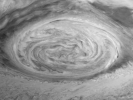
|
|
||||

|
1997-12-04 | Jupiter |
Galileo |
Solid-State Imaging |
571x1000x3 |

|
|||||

|
1997-12-10 | Jupiter |
Galileo |
Solid-State Imaging |
1700x900x3 |

|
|||||

|
1997-12-10 | Jupiter |
Galileo |
Solid-State Imaging |
1650x950x3 |

|
|||||

|
1997-12-18 | Jupiter |
Galileo |
Solid-State Imaging |
1000x1700x1 |

|
|||||

|
1997-12-18 | Jupiter |
Galileo |
Solid-State Imaging |
1000x1700x1 |

|
|||||

|
1997-12-18 | Jupiter |
Galileo |
Solid-State Imaging |
1000x1700x1 |

|
|||||

|
1997-12-18 | Jupiter |
Galileo |
Solid-State Imaging |
800x800x3 |

|
|||||

|
1997-12-18 | Jupiter |
Galileo |
Solid-State Imaging |
683x467x3 |

|
|||||

|
1997-12-18 | Jupiter |
Galileo |
Solid-State Imaging |
518x368x3 |

|
|||||

|
1997-12-18 | Jupiter |
Galileo |
Solid-State Imaging |
1000x1000x1 |

|
|||||

|
1998-03-06 | Jupiter |
Galileo |
Solid-State Imaging |
800x900x3 |

|
|||||

|
1998-03-06 | Jupiter |
Galileo |
Solid-State Imaging |
1300x1000x1 |

|
|||||

|
1998-03-06 | Jupiter |
Galileo |
Solid-State Imaging |
1300x1000x1 |

|
|||||

|
1998-03-06 | Jupiter |
Galileo |
Solid-State Imaging |
640x485x1 |

|
|||||

|
1998-03-06 | Jupiter |
Galileo |
Solid-State Imaging |
552x735x1 |

|
|||||

|
1998-03-06 | Jupiter |
Galileo |
Solid-State Imaging |
1600x1200x3 |
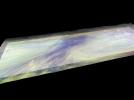
|
|||||

|
1998-03-06 | Jupiter |
Galileo |
Solid-State Imaging |
1600x1200x3 |

|
|||||

|
1998-03-06 | Jupiter |
Galileo |
Solid-State Imaging |
1600x1200x3 |

|
|||||

|
1998-03-06 | Jupiter |
Galileo |
Solid-State Imaging |
1600x1200x3 |

|
|||||

|
1998-03-06 | Jupiter |
Galileo |
Solid-State Imaging |
1600x1200x3 |

|
|||||

|
1998-03-06 | Jupiter |
Galileo |
Solid-State Imaging |
1600x1200x3 |

|
|||||

|
1998-03-06 | Jupiter |
Galileo |
Solid-State Imaging |
572x480x1 |

|
|||||

|
1998-03-06 | Jupiter |
Galileo |
Solid-State Imaging |
572x480x1 |

|
|||||

|
1998-03-06 | Jupiter |
Galileo |
Solid-State Imaging |
572x960x1 |

|
|||||

|
1998-03-06 | Jupiter |
Galileo |
Solid-State Imaging |
1300x1200x1 |

|
|||||

|
1998-03-06 | Jupiter |
Galileo |
Solid-State Imaging |
1300x1200x1 |

|
|||||

|
1998-03-06 | Jupiter |
Galileo |
Solid-State Imaging |
1300x600x1 |

|
|||||

|
1998-03-06 | Jupiter |
Galileo |
Solid-State Imaging |
1300x600x1 |

|
|||||

|
1998-03-06 | Jupiter |
Galileo |
Solid-State Imaging |
1300x1200x1 |

|
|||||

|
1998-03-06 | Jupiter |
Galileo |
Solid-State Imaging |
1300x600x1 |

|
|||||

|
1998-03-06 | Jupiter |
Galileo |
Solid-State Imaging |
1300x600x1 |
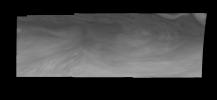
|
|||||

|
1998-03-06 | Jupiter |
Galileo |
Solid-State Imaging |
1000x1000x1 |

|
|||||

|
1998-03-06 | Jupiter |
Galileo |
Solid-State Imaging |
1000x1000x1 |

|
|||||

|
1998-03-06 | Jupiter |
Galileo |
Solid-State Imaging |
900x500x1 |

|
|||||

|
1998-03-06 | Jupiter |
Galileo |
Solid-State Imaging |
900x500x1 |

|
|||||

|
1998-03-06 | Jupiter |
Galileo |
Solid-State Imaging |
1300x1200x1 |

|
|||||

|
1998-03-06 | Jupiter |
Galileo |
Solid-State Imaging |
1300x1200x1 |

|
|||||

|
1998-03-26 | Jupiter |
Galileo |
Near Infrared Mapping Spectrometer |
712x725x3 |

|
|||||

|
1998-03-26 | Jupiter |
Galileo |
Solid-State Imaging |
1200x1600x1 |

|
|||||

|
1998-03-26 | Jupiter |
Galileo |
Solid-State Imaging |
1000x1200x1 |

|
|||||

|
1998-03-26 | Jupiter |
Galileo |
Solid-State Imaging |
1000x1200x1 |

|
|||||

|
1998-03-26 | Jupiter |
Galileo |
Solid-State Imaging |
600x600x1 |

|
|
||||

|
1998-03-26 | Jupiter |
Galileo |
Solid-State Imaging |
640x485x1 |
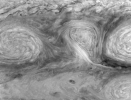
|
|
||||

|
1998-04-02 | Jupiter |
Galileo |
Photopolarimeter-Radiometer |
468x604x3 |

|
|||||

|
1998-04-02 | Jupiter |
Galileo |
Photopolarimeter-Radiometer |
429x585x3 |

|
|||||

|
1998-10-14 | Jupiter |
Galileo Hubble Space Telescope |
850x950x3 | |

|
|||||

|
1998-12-07 | Jupiter |
Galileo |
Photopolarimeter-Radiometer |
1500x2571x3 |

|
|||||

|
1998-06-10 | Jupiter |
Galileo |
Solid-State Imaging |
900x900x3 |
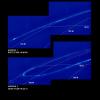
|
|||||

|
1998-06-10 | Jupiter |
Galileo |
Solid-State Imaging |
900x950x3 |

|
|||||

|
1998-06-10 | Jupiter |
Galileo |
Solid-State Imaging |
900x950x3 |

|
|||||

|
1998-06-10 | Jupiter |
Galileo |
Solid-State Imaging |
900x900x3 |

|
|||||

|
1998-10-13 | Jupiter |
Galileo |
Solid-State Imaging |
880x620x3 |

|
|||||

|
1998-10-13 | Jupiter |
Galileo |
Solid-State Imaging |
1152x855x1 |

|
|||||

|
1998-10-13 | Jupiter |
Galileo |
Solid-State Imaging |
592x537x3 |
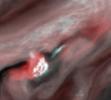
|
|||||

|
1998-12-07 | Jupiter |
Galileo |
Solid-State Imaging |
900x900x3 |

|
|||||

|
1999-03-18 | Jupiter |
Galileo |
Solid-State Imaging |
640x485x1 |

|
|
||||

|
1999-04-15 | Jupiter |
Galileo |
Solid-State Imaging |
640x485x1 |

|
|
||||

|
1999-08-27 | Jupiter |
Galileo |
Solid-State Imaging |
1300x1200x3 |

|
|||||

|
1999-08-27 | Jupiter |
Galileo |
Solid-State Imaging |
2200x1200x3 |

|
|||||

|
2000-10-26 | Jupiter |
Galileo |
Near Infrared Mapping Spectrometer |
2769x1542x3 |

|
|||||

|
2000-09-25 | Jupiter |
Galileo |
Solid-State Imaging |
4306x3306x3 |
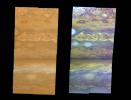
|
|||||

|
2002-10-08 | Jupiter |
Galileo Hubble Space Telescope IRTF |
WFPC2 |
650x300x3 |

|
|||||

|
2011-03-31 | Jupiter |
Galileo |
2610x4104x3 | |

|
|||||

|
2015-09-15 | Jupiter |
Galileo Voyager |
1700x956x3 | |

|
|||||

|
1998-03-26 | J Rings |
Galileo |
Solid-State Imaging |
1108x300x1 |

|
|||||

|
1998-03-26 | J Rings |
Galileo |
Solid-State Imaging |
1493x487x1 |

|
|||||

|
1998-03-26 | J Rings |
Galileo |
Solid-State Imaging |
1152x376x3 |

|
|||||

|
1998-03-26 | J Rings |
Galileo |
Solid-State Imaging |
800x410x1 |

|
|||||

|
1998-03-26 | J Rings |
Galileo |
Solid-State Imaging |
1151x800x3 |

|
|||||

|
1998-09-15 | J Rings |
Galileo |
Solid-State Imaging |
2663x1418x1 |

|
|||||

|
1998-09-15 | J Rings |
Galileo |
Solid-State Imaging |
1078x636x1 |

|
|||||

|
1998-09-15 | J Rings |
Galileo |
Solid-State Imaging |
2016x1529x3 |

|
|||||

|
1998-09-15 | J Rings |
Galileo |
Solid-State Imaging |
2560x1920x3 |
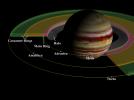
|
|||||

|
1998-09-15 | J Rings |
Galileo |
Solid-State Imaging |
1800x2700x3 |

|
|||||

|
2000-09-25 | J Rings |
Galileo |
Solid-State Imaging |
4306x3306x3 |

|
|||||

|
2011-03-31 | J Rings |
Galileo |
Solid-State Imaging |
715x781x1 |

|
|||||

|
1997-09-07 | Io |
Galileo |
Solid-State Imaging |
2340x1475x3 |

|
|||||

|
1997-09-08 | Io |
Galileo |
Solid-State Imaging |
700x800x3 |

|
|||||

|
1997-09-08 | Io |
Galileo |
Solid-State Imaging |
2600x1150x3 |

|
|||||

|
1997-09-10 | Io |
Galileo |
Solid-State Imaging |
1775x1300x3 |

|
|||||

|
1997-09-07 | Io |
Galileo |
Solid-State Imaging |
2000x2000x3 |

|
|||||

|
1997-11-18 | Io |
Galileo |
Solid-State Imaging |
798x787x3 |

|
|||||

|
1997-11-18 | Io |
Galileo |
Solid-State Imaging |
1215x729x3 |

|
|||||

|
1998-03-26 | Io |
Galileo |
Near Infrared Mapping Spectrometer |
1900x1300x3 |

|
|||||

|
1997-12-18 | Io |
Galileo |
Solid-State Imaging |
800x800x1 |

|
|||||

|
1997-12-18 | Io |
Galileo |
Solid-State Imaging |
493x493x1 |

|
|||||

|
1997-12-18 | Io |
Galileo |
Solid-State Imaging |
1817x1817x3 |
![Io, the most volcanic body in the solar system is seen in the highest resolution obtained to date [Sept.7 & Nov. 6, 1996] by NASA's Galileo spacecraft.](/thumb/PIA00583.jpg)
|
|||||

|
1998-03-06 | Io |
Galileo |
Solid-State Imaging |
980x655x3 |

|
|||||

|
1997-11-18 | Io |
Galileo |
Solid-State Imaging |
2284x727x3 |

|
|||||

|
1997-12-18 | Io |
Galileo |
Solid-State Imaging |
390x197x3 |

|
|||||

|
1997-12-18 | Io |
Galileo |
Solid-State Imaging |
388x394x3 |

|
|||||

|
1998-03-26 | Io |
Galileo |
Solid-State Imaging |
1000x800x3 |

|
|||||

|
1997-09-07 | Io |
Galileo |
Solid-State Imaging |
2010x1640x3 |

|
|||||

|
1997-09-07 | Io |
Galileo |
Solid-State Imaging |
1890x1780x3 |

|
|||||

|
1997-09-07 | Io |
Galileo |
Solid-State Imaging |
1640x1650x3 |

|
|||||

|
1997-09-07 | Io |
Galileo |
Solid-State Imaging |
1840x1900x3 |

|
|||||

|
 |
 |
 |
 |
 |
 |
 |

|
| 1-100 | 101-200 | 201-300 | 301-400 | 401-500 | 501-600 | 601-700 |
| Currently displaying images: 101 - 200 of 648 |